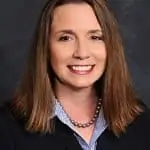

Visit professionals from SCS Engineers and SCS Field Services at BOOTH 28 at SWANA’s 3-day Northwest Regional Symposium, April 18-20, at the Tulalip Resort Hotel in Marysville, WA. SCS Engineers and SCS Field Services are Bronze sponsors of the conference, and SCS Engineers is also a meal sponsor.
The symposium, themed “The Next Normal: The Future of Solid Waste Management,” will bring together solid waste industry professionals and students from a wide variety of specialized fields to exchange information and learn from technical experts. Hear presentations by SCS professionals, including:
The symposium program will include sessions on Organics Management Planning; Aging Transfer Facilities Planning; Waste Systems’ Financial Impacts (zero waste and funding opportunities); Emerging Landfill Industry Trends (PFAS, liner, leachate, and landfill gas); Sustainability, Recycling, and Extended Producer Responsibility (EPR). It will also include tours of several compelling sites, plenty of networking opportunities, educational credits, exhibits, and much more!
Each spring the Evergreen (WA and MT), Beaver (OR and ID), and Pacific (BC and Yukon) chapters of the Solid Waste Association of North America (SWANA) hold this joint Northwest Symposium.
For full program details and registration information, click here
USEPA recently issued Effluent Guidelines Program Plan 15, which includes a focus on PFAS discharges from multiple categories. In conjunction with Plan 15, EPA has determined that revisions to the effluent guidelines and standards for the Landfills Category (40 CFR part 445) are warranted. See Section 6.3.3 of the Plan. Here are a few excerpts regarding landfill leachate:
Landfill leachate and wastewater treatment planning and resource information are available here.
From the USEPA to headlines in the media, coverage of PFAS moving from wastewater to drinking water is a major concern. Furthermore, there are growing concerns about how much PFAS is in by-products that are recycled or reused from waste products. Topping that list is fertilizer.
Retail fertilizer products made from at least 50% biosolids commonly sold to the general public and used in farming contain PFAS, which could get into crops and stock, eating those crops. The Environmental Protection departments in some states are beginning to consider or pass state-level specific regulations on the content of PFAS in biosolids.
The December 2022 USEPA memo to states (pages 4-5) made these recommendations on biosolids as follows:
Tony Kollasch, an environmental consultant specializing in remediation, tells us to use precaution and learn more about what plans are underway in your state. In his Wisconsin Agri-Business article, BIOSOLIDS and PFAS – NUTRIENTS with a SIDE OF CONCERN, he walks readers through the most recent reports and studies using plain language.
The issues and questions that come up are solvable. There are treatments for removing PFAS, and as an environmental engineering and consulting firm, we solve these types of challenges. We encourage the safe use of by-products and urge you to learn more about specific products by joining associations where you can educate yourself – it’s good for business and for understanding pending regulations that may impact your operations. It will help you run your business sustainably by making sound decisions based on human health, the environment, and economic demand.
Additional Resources:
Meet SCS Engineers professionals at the A&WMA/ASME Waste Information Exchange, April 11-12, 2023, at the Doubletree Hilton Washington DC-Crystal City Hotel, in Arlington, Virginia.
This conference will cover the latest on a broad range of waste-related topics including regulations and research in an interactive, discussion-focused format. This is an excellent learning and networking opportunity to hear directly from experts at EPA, NGOs, industry, and academia who are working together to develop solutions to creating a cleaner and healthier environment. The technical program will cover policy updates and regulatory changes, as well as current and late-breaking research on hot topics such as:
• Solid Waste
• Biosolids
• Landfill Issues and Greenhouse Gas Emissions Monitoring
• Reuse/Recycling
• Resource Management
• Waste-to-Energy
• PFAS Emissions and Controls
• Environmental Justice
• RCRA Requirements for Open Burning
Managers, practitioners, policymakers, and researchers involved in waste management, public works, operations, maintenance, manufacturing, transportation, technology, compliance, collections, and other environmental roles will benefit from the technical content and networking available at this conference.
Sponsorship and display opportunities are available at this conference! Discover how your company can maximize exposure, generate leads, and support the industry.
Visit www.awma.org/waste for registration information and evolving conference details.
Meet SCS Engineers and SCS Field Services professionals at BOOTH 1704 at WasteExpo 2023, May 1-4, in New Orleans.
WasteExpo is the place to be! The conference program is your professional development opportunity of the year! The education and training that you’ll receive is guaranteed to sharpen your skills to help you do your job better. WasteExpo’s conference program is unparalleled. 2023 Conference Tracks include:

Monday, May 1
8:00 AM – 9:15 AM
Room: 275, Session Number: MTECH1

Monday, May 01, 2023
8:30 AM – 9:45 AM
Room: 279, Session Number: MRECYC1

Monday, May 01, 2023
10:15 AM – 11:30 AM
Room: 279, Session Number: MRECYC2

Tuesday, May 02, 2023
8:00 AM – 9:15 AM, Room: 289, Sustainability Track
Seizing an Opportunity: The Rise of MRF Investments with Bob Gardner, Sr. VP Solid Waste
Tuesday, May 02, 2023
12:00 PM – 1:15 PM
Room: 279, Session Number: TRECYC3

Wednesday, May 03, 2023
10:45 AM – 12:00 PM
Room: 275, Session Number: WTECH2
Click for more conference details and registration information
Reducing CO2 is essential for our planet to thrive. At SCS Engineers, we’ve been helping all industries, cities, and states do just that for over 50 years. We focus solely on environmental solutions; in the industry, it’s called pure environmental, along with industry rankings that consistently rank our results in the top tiers.
Our culture is one of sharing. Our professional staff are involved in their communities and global industry associations where we speak, publish and share what works openly with you. Our newest blog series Preventing and Reducing CO2 publishes monthly, bringing you the latest papers, presentations, and case studies on reducing CO2 and targeting climate change.
We hope you find this collection of article, papers, videos, and opinion pieces helpful. The opinion pieces raise logical questions and help us create sustainable solutions rather than quick fixes that don’t stand up economically over time. We include a broader range of topics for landfills, as they diligently work toward reducing CO2 and using proven wastewater treatment options.
Sustainable Living Key to Tackling Climate Change Tackling Climate Change: ISWA’s James Law explains how changing people’s mindsets and behaviors impacts climate change …
The Wise Way to Fight Inevitable Climate Change This opinion piece in the Pittsburgh Post-Gazette by Joseph Duckett describes two major reasons why we need to rethink a country-by-country strategy to fight climate change …
Landfill PFAS Study: Concentrations After Leachate Treatment The objective of this study was to evaluate a cross-section of full-scale on-site landfill treatment systems to measure changes in PFAS concentrations. Leachate samples were collected before and after treatment from 15 facilities and were evaluated for 26 PFAS, including 11 perfluoroalkyl carboxylic acids (PFCAs), 7 perfluoroalkyl sulfonic …
Design to Maximize Landfill Air Space – Your Landfill’s Golden Egg Free Webinar and QA Forum: Modern Landfill Design for Siting and Maximizing Air Space The trend to go larger necessitates more landfill design sophistication and master planning to recoup the growing capital investment upfront. During this month’s SCS Engineers webinar and open forum, our panel will discuss how extending the life of a landfill is a greener option …
EPA’s Brownfields Cleanup Grants $60M – Deadline November 22 Brownfields redevelopment and land recycling cleans up past activities that occurred on properties impacting local ecosystems. These properties help revitalize areas economically while making them safe again. When you’re looking at energy as well as environmental costs, remediation is often greener. The FY 2023 Brownfields Multipurpose, Assessment, Revolving Loan Fund, and Cleanup Grant Guidelines are now available (go to Open Solicitations). The application submission deadline is November 22, 2022.
SCS respects your privacy – you may share these resources individually using social media and email icons on each page. You may share all of the resources by sharing this blog. Look for our next Preventing and Reducing CO2 blog in October! If you missed our August issue – no problem, click here.
Since the 1990s, USEPA has provided risk-based Regional Screening Levels (RSLs) to assist in evaluating environmental monitoring and contaminant levels – e.g., in soil, air, and water at residential and industrial properties. EPA periodically updates the RSL tables to reflect new contaminants of concern and new chemical toxicity data. The May 2022 RSL tables have been expanded to include 14 per- and polyfluoroalkyl substances (PFAS). PFAS are a large family of emerging contaminants that are garnering significant interest due to their significant toxicity and widespread use in industrial and consumer products such as fire-fighting foam, fabric treatment, and some food packaging. The latest EPA RSL tables are available at: https://www.epa.gov/risk/regional-screening-levels-rsls-generic-tables
Additional info regarding ongoing efforts to address and treat PFAS are available by searching this website: https://www.scsengineers.com/ and then using the filter to narrow down returns to your interests.
In a letter to Congress, SWANA and NWRA associations request that regulation under the Comprehensive Environmental Response, Compensation, and Liability Act (CERCLA) for addressing per- and polyfluoroalkyl substances (PFAS) contamination assign environmental cleanup liability to the industries that created the pollution in the first place. Both associations note that MSW landfills and solid waste management, an essential public service do not manufacture nor use PFAS. The industry, and ultimately the general public should therefore not be burdened with CERCLA liability and costs associated with mitigating PFAS from water and wastewater.
May 10, 2022
Re: Relief for Municipal Solid Waste Landfills from CERCLA Liability for PFAS
Dear Chairman Carper, Ranking Member Capito, Chairman DeFazio, Ranking Member Graves, Chairman Pallone, and Ranking Member McMorris Rodgers:
The municipal solid waste (MSW) management sector strongly supports the goal of addressing per- and polyfluoroalkyl substances (PFAS) contamination and holding accountable manufacturers and heavy users of these compounds. We are concerned, however, that regulation under the Comprehensive Environmental Response, Compensation, and Liability Act (CERCLA) instead would assign environmental cleanup liability to essential public services and their customers. We therefore request that Congress provide MSW landfills and other passive receivers with a narrow exemption from liability if certain PFAS are designated as hazardous substances under CERCLA. Doing so would keep CERCLA liability on the industries that created the pollution in the first place.
Context
• Landfills neither manufacture nor use PFAS; instead, they receive discarded materials containing PFAS that are ubiquitous in residential and commercial waste streams. MSW landfills and the communities they serve should not be held financially liable under CERCLA for PFAS contamination, as landfills are part of the long-term solution to managing these compounds.
• Landfills are essential public services that are subject to extensive federal, state, and local environmental, health, and safety requirements. Further, MSW landfills are important to managing and limiting PFAS in the environment, as recognized by the Environmental Protection Agency (EPA) in its December 2020 draft Interim Guidance on the Destruction and Disposal of [PFAS] and Materials Containing [PFAS].
• Just as certain airports are required by law to use firefighting foam containing PFAS, permitting authorities often require landfills to accept waste streams containing PFAS.
• Most landfills rely on wastewater treatment facilities for leachate management. Wastewater and drinking water facilities increasingly rely on landfills for biosolids management and disposal of PFAS-laden filters. Efforts to address PFAS at MSW landfills and drinking water and wastewater facilities must avoid disrupting this interdependence among essential public services to communities.
• Landfill leachate typically represents a minor proportion of the total quantity of PFAS received at wastewater treatment facilities from all sources. PFAS manufacturers or users, by comparison, contribute PFAS at levels that can be orders of magnitude higher than landfills.
Significant Economic Impacts
• Removing PFAS from landfill leachate requires advanced treatment techniques which are prohibitively expensive. Estimated capital costs to implement leachate pretreatment at a moderate-sized landfill to the extent necessary to significantly reduce PFAS range from $2 million to $7 million, with nationwide costs totaling $966 million to $6.279 billion per year for the solid waste sector. Trace concentrations of PFAS nevertheless would remain in leachate following pretreatment, exposing landfills to CERCLA liability.
• Absent relief from CERCLA liability, manufacturers and heavy users of PFAS compounds will bring claims for contribution against landfills and other passive receivers, generating significant litigation costs. EPA’s exercise of enforcement discretion will not insulate landfills from this litigation.
• These costs will be passed along to communities, water and wastewater treatment facilities, and biosolids management, all of which rely on the services of MSW landfills.
Broad Unintended Consequences
• CERCLA regulation will impel landfills to restrict inbound wastes and/or increase disposal costs for media with elevated levels of PFAS, including filters, biosolids, and impacted soils at Department of Defense facilities. The mere prospect of regulation in this area is already disrupting the interdependence of the drinking water, wastewater, and solid waste sectors.
• Food waste compost may contain PFAS due to contact with PFAS-lined packaging materials. As a result, a CERCLA designation could result in communities diverting food waste from organics recycling programs, hindering federal, state, and local climate and waste reduction goals.
• Cost increases likely will have a significant disproportionate impact on low-income households that rely on the affordability of services that the solid waste sector provides.
Recommendation
Although our sector is simultaneously pursuing “no action assurance” from EPA, the agency historically has been very hesitant to provide this relief given its policy that assurances should be given only “in extremely unusual cases.” As such, and acknowledging that EPA may have limited authority to act on our request, we recommend providing the following narrow exemption from CERCLA liability that affords relief to landfills and other passive receivers of PFAS1:
(a) IN GENERAL.—No publicly owned or operated community water system (as defined at 42 U.S.C. 300f), publicly owned treatment works (as defined at 33 U.S.C. 1292), or municipal solid waste landfill (as defined at 40 C.F.R. 258.2) shall be liable under the Comprehensive Environmental Response, Compensation, and Liability Act of 1980 (42 U.S.C. 9601 et seq.) for the costs of responding to, or damages resulting from, a release to the environment of a perfluoroalkyl or polyfluoroalkyl substance designated as a hazardous substance under section 102(a) of such Act that resulted from the discharge of effluent, the disposal or management of biosolids, the disposal of filtration media resin, or the discharge of leachate where such actions are in compliance with Federal or State law and all applicable permits.
(b) EXCEPTION.—Subsection (a) shall not apply with respect to any discharge described in such subsection that results from any gross negligence, willful misconduct, or noncompliance with any Federal or State law or permit governing the discharge of effluent, disposal or management of biosolids, disposal of filtration media resin, or waste disposal.
Thank you for your consideration of our request, and we look forward to continuing to partner with the federal government to ensure the safe and effective management of waste streams containing PFAS.
Sincerely,
National Waste & Recycling Association
Solid Waste Association of North America
cc: Senate EPW Committee Members
House T&I and E&C Committee Members
_______________________________________
1 The exemption would not extend to underlying soil and groundwater contamination from a MSW landfill or to facilities other than MSW landfills that accept waste streams with elevated concentrations of PFAS.
EPA Requires Reporting on Releases and Other Waste Management of Certain PFAS, Including PFBS
As part of EPA’s Strategic Roadmap, the Agency announced the automatic addition of four per- and polyfluoroalkyl substances (PFAS) to the Toxics Release Inventory (TRI) list.
As of January 1, 2022, facilities that are subject to reporting requirements for these chemicals should start tracking their activities involving these PFAS as required by Section 313 of the Emergency Planning and Community Right-to-Know Act. Reporting forms for these PFAS will be due to EPA by July 1, 2023, for the calendar year 2022 data.
In April 2021:
EPA previously updated the Code of Federal Regulations with PFAS that were added to the TRI on January 1, 2021, under section 7321(c) of the NDAA and regulated by an existing significant new use rule (SNUR) under the Toxic Substances Control Act (see 40 CFR 721.10536).
In addition to continuing to add PFAS to the TRI, the EPA will soon announce a series of PFAS test orders requiring PFAS manufacturers to provide the Agency with toxicity data and information on PFAS.
If you have questions or concerns about reporting requirements, contact one of our environmental chemistry – hazardous materials/waste professionals at .
Anna Cerf conducted research at the Environmental Research and Education Foundation, had an internship at the Environmental Defense Fund, and worked for SCS Engineers. Now she’s off to Germany.
Cerf graduated from UVA in 2020 with a degree in civil engineering and a minor in urban and environmental planning. The course work for her program will cover three fundamental disciplines: sanitary engineering, groundwater remediation, and hydraulic engineering.
She is a Rotary Global Grant Scholar, using an award to fund her two-year master’s program in water resource engineering and management at the University of Stuttgart. “With the support of ISWA professors and access to University of Stuttgart’s premier research facilities, I will research the transport and treatment of emerging contaminants for my master’s thesis.”
Cerf feels having a master’s in water resource engineering and management will further her career at the intersection of environmental issues and public health. “The University of Stuttgart has top-of-the-line water research facilities,” Cerf said. “It is also home to the Institute of Sanitary Engineering, Water Quality, and Solid Waste Management.
“By the end of the program, I will be able to anticipate, understand and evaluate water management-related issues,” Cerf said. “As climate change exacerbates existing water scarcity issues and environmental degradation damages water quality, these skills become increasingly important.”
Read more about this accomplished SCS Young Professional.